We are grateful to all donors for their generous continued support for moving Cambodia’s rural poor out of poverty.
What to donate
[accordion]
[acc_item title=”Give a Community Pond”]
[Updated: 07 June 2016]
Every year, in the dry season rural Cambodians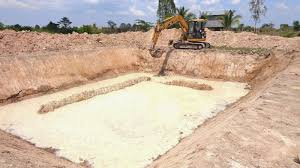 face a shortage of water for household, livestock and crop consumption. This resulted from the lack of support from the government for irrigation systems, plus irregular rainfalls caused by climate change.
face a shortage of water for household, livestock and crop consumption. This resulted from the lack of support from the government for irrigation systems, plus irregular rainfalls caused by climate change.
The gift of community pond will help reduce the vulnerability of the community to drought and improve their economic livelihoods.
CP (sized: 30 m x 40 m x 5 m) = USD 4,000.00
[/acc_item]
[acc_item title=”Give birds”]
[Updated: 07 June 2016]
Chickens and ducks are low cost and easy to raise for most farmers. Families can feed their flocks with local vegetation and rice. The popularity of chicken meat and duck eggs make for a favorable market for these foul.
B1: Chicken, 5 hens & 1 cock 60 USD
[/acc_item]
[acc_item title=”Give family pond”]
[Updated: 07 June 2016]
The gift of a fish pond provides a family with improved nutrition and income. The pond also offers water for gardens, an important contribution in a country with a significant dry season. LWD shares the cost of digging and preparing the pond with the household and trains the householder to raise the fish.
FP1: One pond (including digging, young fish and training) 250 USD
[/acc_item]
[acc_item title=”Give a Pig”]
[Updated: 07 June 2016]
Piglets improve families’ incomes and are less work to care for than cattle. Pig farmers use their own wood, nails and cement to build shelters for their pigs.
P1: Piglet 60 USD (for one piglet)
[/acc_item]
[acc_item title=”Give Vegetable Seed”]
[Updated: 07 June 2016]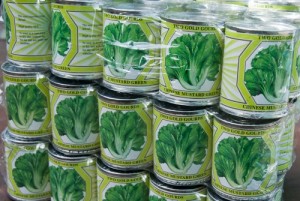
Seeds are essential to successful home gardening projects. Gardening projects cultivate small vegetable plots near to the family home, turning otherwise idle land into productive plots. With gardens, families save on food bills, earn additional money, and most importantly, improve their health through a more nutritious diet.
VS1: Chinese Radish 10 kilos 15 USD
VS2: Cucumber 10 kilos 15 USD
VS3: Eggplant 10 kilos 15 USD
VS4: Chinese Kale 10 kilos 15 USD
VS5: Ten kilos of each seed 60 USD
[/acc_item]
[acc_item title=”Give Farming Tools”]
[Updated: 07 June 2016]
Tools make farming easier and more productive for rural Cambodian families. Most vulnerable households, including women headed households, benefit from this support. Tools can also equip a new Farmer Field School.
T1: 8 Hoes 32 USD
FT2: 4 Watering Cans 12 USD
FT3: 12 Rakes 36 USD
FT4: 1 Water Barrel 20 USD
[/acc_item]
[acc_item title=”Give a Rice Bank “]
[Updated: 07 June 2016]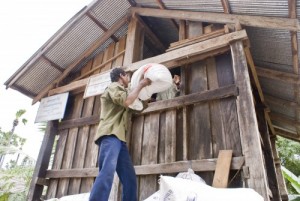
Rice banks increase a village’s food security. Farmers and families facing food shortage can borrow rice at modest interest rates. Communities manage the banks and can sell surplus rice to reinvest in the bank’s future. Funding this gift provides training for administering a rice bank, materials to build one and rice seed to fill it. Villagers contribute local materials and labor to build the rice bank.
RB1: Rice Bank 1,500 USD
[/acc_item]
[acc_item title=”Give School Furnishings”]
[Updated: 07 June 2016]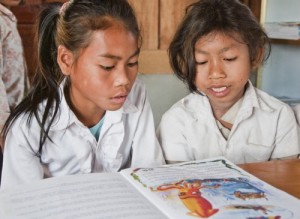
Some Cambodian children do not attend school because they have to sit on a dirt or concrete floor during class. As requested by Village Development Committees, LWD supports the construction and furnishing of community schools. Gifts of furnishings ensure that children and teachers have desks to sit and blackboards to write on.
SF1: Student desk 34.50 USD
SF2: Teacher’s desk 40.00 USD
SF3: Two blackboards 30 USD
[/acc_item]
[acc_item title=”Give a Scholarship”]
[Updated: 07 June 2016]
A scholarship sends a rural child to school equipped for learning. One scholarship provides books, pens, school bag and clothes for a student.
S1: Sponsor one child 20 USD (Uniform, books, pens, bags, shoes)
S2: Sponsor a bicycle 60 USD per student
[/acc_item]
[acc_item title=”Give a Biogas Digester”]
[Updated: 07 June 2016]
Biogas plants provide multiple benefits at the household, local, national and global level. These benefits have a clear impact on gender, health, poverty, employment and environment.
Economic Benefits
- Helped the poor save $14.39/month from expenditures on fuel, on average 6-9 kg of fuelwood and 0.2 liters of kerosene per household on a daily basis;
- Helped the poor save $4.3/month or $52/year from buying fertilizer;
- Saved time to utilize in other income generation activities or for leisure;
- Enhanced soil productivity because of the use of bio-slurry;
- Reduction in the quantity of chemical fertilizers used due to the use of biodigester effluent;
- Reduction on health care expenditures due to decrease in smoke-borne diseases;

Health Benefits
- Reduction in smoke borne diseases (dizziness, headache, eye-burning, respiratory tract-infection, nausea etc.);
- Improved household sanitation due to attaching of latrines into bio-digesters, absences of black soot, ashes, firewood/dung cakes in kitchen;
- Decreased number of flies near the stables;
- Decrease in burning accidents.
- Preservation of forest;
- Reduction in green-house gases especially methane;
- Prevention in land-fertility degradation due to excessive use of chemical fertilizers;
- Elimination of smell from dung storage ponds at pig farms;
- Reduced pollution from pig dung being dumped in surface water.
- Extra time for social activities;
- Enhanced prestige in the community;
- Reduce workload, especially for women;
- Bright light to help improve quality of education for children and household works;
- Increase in rate of enrolment of girls in school because of the liberty from fuel collection.
Environmental Benefits
Social Benefits
BD = USD 600.00
[/acc_item]
[acc_item title=”Give a Well”]
[Updated: 07 June 2016]
LWD works with the poorest people in the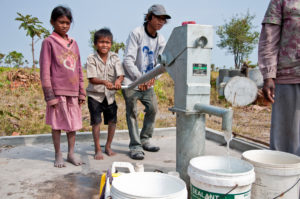 remote areas to empower them to manage the development process by themselves. As part of LWD component of food security, Partner Households are encouraged to construct wells. Each well benefits a Partner Household and their neighboring families. This gift contributes cement and stone needed to build a well.
remote areas to empower them to manage the development process by themselves. As part of LWD component of food security, Partner Households are encouraged to construct wells. Each well benefits a Partner Household and their neighboring families. This gift contributes cement and stone needed to build a well.
H1: Open Well 160 USD
H2: Deep Well 2,000 USD
[/acc_item]
[acc_item title=”Give a Latrine”]
[Updated: 07 June 2016]
Sanitation and hygiene remains one of the key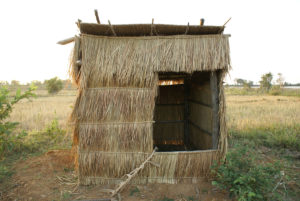 health issues in Cambodia. About 64 percent of the population continues to practice open defecation (75 percent in rural areas), 20 percent of child deaths are related to diarrheal diseases. Poor sanitation costs Cambodia $450 million a year due to health cost resulting from water-borne diseases such as diarrhea.
health issues in Cambodia. About 64 percent of the population continues to practice open defecation (75 percent in rural areas), 20 percent of child deaths are related to diarrheal diseases. Poor sanitation costs Cambodia $450 million a year due to health cost resulting from water-borne diseases such as diarrhea.
To support the government to achieve its goal, LWD, with the strong support from its donors, has shared partly in the work through the integration of “Water and Sanitation Project” into its Country Strategy since 1996. The project aimed to provide poorest rural households with access to clean drinking water and sanitation and hygiene to improve their health.
The latrine was built in the form of bilateral contribution between LWD and the committed household.
LWD provided half bag of cement, four well rings (100 cm in diameter and 50 cm in height), 2 meters of plastic pipe (21 cm in diameter), one ring cover, and one squatting ceramic plate. These key materials cost about $45 in all. The committed households contributed their labor and local materials for the walls and roof. The contribution in-kind made by the community varies depending on the type of walls and roof they preferred. Their contribution ranges from $40 (palm leaves walls and roof) to $150 (concrete walls and zinc roof).
This gift contributes to improving health, increasing education opportunities, safety and dignity, especially for women and girls.
L1: USD70.00 (for materials)
L2: USD150.00 (for one simple latrine)
L3: USD 350.00 (for one concrete walls and zinc roof latrine)
[/acc_item]
[acc_item title=”Give Hand Tractor”]
[Updated: 07 June 2016]
Hand tractors are very important for farmers. 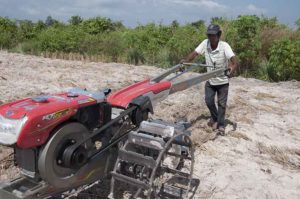 With the help of tractors, all stages of farming are sped up and crop yields are also increased. However, poor farmers in rural Cambodia cannot afford to buy it.
With the help of tractors, all stages of farming are sped up and crop yields are also increased. However, poor farmers in rural Cambodia cannot afford to buy it.
Given the high cost, we suggest that 20 households should have one hand tractor.
HT: One hand tractor, USD2,850.00
[/acc_item]
[/accordion]